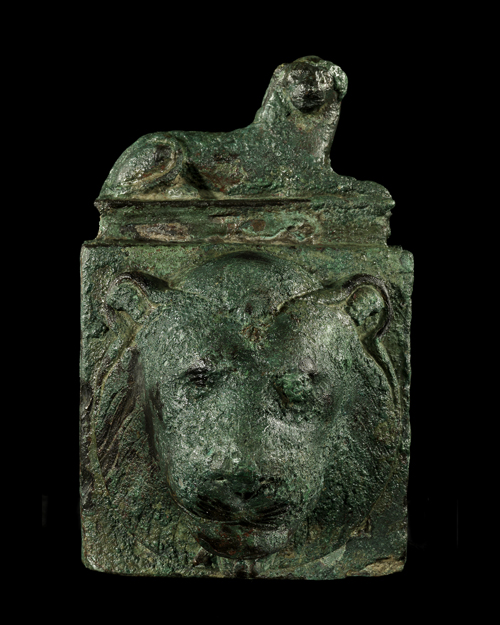
© 2008 Musée du Louvre / Georges Poncet
Late Period, 27th-31st dynasties, 525-332 BC
Bronze
H.: 15.8 cm; W.: 33.5 cm; D.: 10 cm.
Department of Egyptian Antiquities, Musée du Louvre
(N 885 A)
To enhance temple architecture, kings chose high quality materials such as cedar from Lebanon and pine from Cilicia for the doors and poles of pylons, and bronze for locks and pole fixtures. This bronze bolt, which harmonized with the metal hinge, illustrates the care taken on details in the home of the gods. Formerly, in the days of splendor, the bronze would gleam with a gilded sheen, underscoring the lavishness of the door. At one end, the rectangular bolt ends in the lion head, while at the top it has an image of a recumbent beast. The inside is hollow, except for the lion’s head. The bolt slid into a hole in the upright; when the door was pushed hard against the frame, the bolt, set on a piece on the panel, could be inserted. The door was then block on one side by the door frame against which it rested, and by the bolt on the other side. This system blocked entry to the temple from without, but not from within. The lion, a ferocious animal, here plays a protective function, warding off evil forces likely to cross the threshold the moment the priest opens the door.